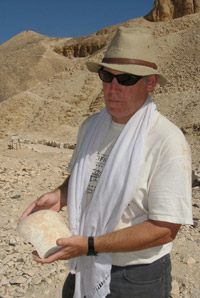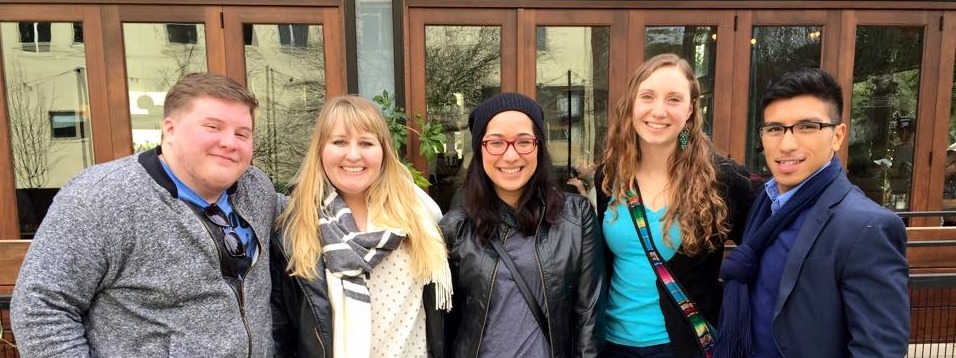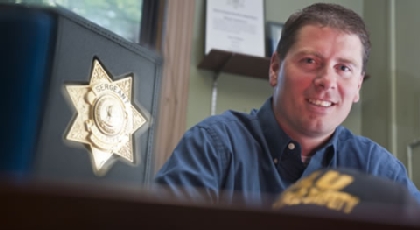Page 83 • (1,341 results in 0.019 seconds)
-
Join Luke Van Tassel ’24 as he heads to Seattle (only 45 minutes from campus!) — to see a Billie Eilish concert. Follow the PLU Tik Tok to see more adventures from our students!
Around the PNW: Students head to Seattle for a concert Posted by: vcraker / May 18, 2022 May 18, 2022 Join Luke Van Tassel ’24 as he heads to Seattle (only 45 minutes from campus!) — to see a Billie Eilish concert. Follow the PLU Tik Tok to see more adventures from our students! Read Previous History and literature senior aspires to be a lifelong learner Read Next Around the PNW: Students hike to Cherry Creek Falls LATEST POSTS PLU Scores 4.5 out of 5 on Campus Pride Index: What does that mean
-
Jeff Clapp ’89, PLU artistic director of theater, PLU theater program undergraduate, son of a theater professor, likes to tell a story of his tenure interview. There, he was asked: What is the strength of the PLU theater program? “We sort of teach the MacGyver…
million to PLU, making her the single largest benefactor in university history. The three-year, $20 million endeavor completed in two distinct phases will officially open with the production of Cole Porter’s Tony Award–winning “Kiss Me, Kate” on the rechristened Eastvold Auditorium Main Stage. Jeff Clapp, who has spent so many of his years in this building, both as a student and a professor, will direct production. From the exterior, it appears little has changed since the days of the Chapel-Music
-
Jeff Clapp ’89, PLU artistic director of theater, PLU theater program undergraduate, son of a theater professor, likes to tell a story of his tenure interview. There, he was asked: What is the strength of the PLU theater program? “We sort of teach the MacGyver…
million to PLU, making her the single largest benefactor in university history. The three-year, $20 million endeavor completed in two distinct phases will officially open with the production of Cole Porter’s Tony Award–winning “Kiss Me, Kate” on the rechristened Eastvold Auditorium Main Stage. Jeff Clapp, who has spent so many of his years in this building, both as a student and a professor, will direct production. From the exterior, it appears little has changed since the days of the Chapel-Music
-

From King Tut to the Mysterious Undecorated Tombs of Ancient Egypt By JuliAnne Rose ’13 If you ever wanted to see the King Tut exhibit, now may be your only chance. Seattle is the last stop for the exhibit before you’ll have to make the…
November 27, 2012 From King Tut to the Mysterious Undecorated Tombs of Ancient Egypt By JuliAnne Rose ’13 If you ever wanted to see the King Tut exhibit, now may be your only chance. Seattle is the last stop for the exhibit before you’ll have to make the 6,800 mile trip to Egypt to see the most well known discovery of ancient Egyptian history. Open to the public seven days a week, the “Tutankhamun: The Golden King and The Great Pharaohs” exhibit runs through January 6, 2013 at the Pacific
-

Initially, Katie Garro ‘11 didn’t think much of Pacific Lutheran University. She viewed it as an opportunity to continue school with friends, but also to stay close to home. This perspective changed when she joined the Diversity Center as a Rieke Scholar. The Rieke Scholarship…
being an advocate for the Diversity Center, she saw an opportunity not only to bond with her friends, but to also be exposed to topics she never had a chance to learn in the small town where she grew up. “Getting to college, being exposed to history, and having to confront [not only] the material conditions for black, brown, and indigenous people in our country, but also the history of what our government has done and the way our systems and structures are still set up, is so important to what I do
-
Regents recognize faculty, student leaders At the annual spring meeting, the Board of Regents approved 12 faculty recipients of Regency Advancement Awards and recognized student and faculty leaders. The Regency Advancement Awards are intended to enhance opportunities for professional development and encourage faculty to pursue…
project can receive up to $4,000. The faculty members who received the award for the next academic year are: Spencer Ebbinga, art; Michael Halvorson, history; Susan Harmon, business; Diane Harney, communication and theatre; JoDee Keller, social work; Erin McKenna, philosophy; Laurie Murphy, computer science and computer engineering; Eric Nelson, languages and literatures; Matthew Smith, biology; Marianne Taylor, psychology; Claire Todd, geosciences; and Robert Wells, communication and theatre
-
Making study away possible A new $2 million scholarship fund will increase study abroad opportunities for low-income students at Pacific Lutheran University. The Bill & Melinda Gates Foundation gave the university a $1 million challenge grant to initiate the endowment fund a year ago. Since…
. The Global Scholar Grants program will help the university meet and exceed that goal. “This will have a profound and significant impact on our study away program,” President Loren J. Anderson said in announcing the scholarship fund last Thursday night. PLU made history in 2006 by becoming the first United States university to have students and faculty studying on all seven continents simultaneously – including an exploration of the natural history, environment and conservation of the Antarctic
-

New director has an ‘open door policy’ By Kari Plog ’11 Campus Safety has a new front man. Pacific Lutheran University welcomes Sgt. Greg Premo as the new director and he plans to continue with the success former director Tony Berger left behind. “I got…
the Pierce County Sheriff’s Department. A high school graduate of Franklin Pierce and husband to a PLU graduate, Premo said he is very familiar with the university’s history and was drawn to the position as a result. “The history and culture of PLU is part of what attracted me here,” Premo said. “Dealing with a college atmosphere seemed exciting to me.” Premo said his career has been strictly law enforcement, so he is excited to face new challenges that come with the territory of serving as
-
Student perspective: The Iditarod Editor’s note: PLU student Loren Liden headed up to Alaska to cover the Iditarod. The following is a reflection on her experience. The Iditarod, a 1,000-mile dogsled race across the state of Alaska, finished Sunday, March 20. A remarkable feat of…
their way. This ceremonial start is just for show, though. The real race begins farther north in Willow. Unlike last year, on Sunday I went to Willow, to an Iditarod re-start party. The party gathered at Crystal Lake to commemorate this mark of Alaska’s history. When the time came, party guests donned sunglasses and snow boots and made their way to the trail to high-five their favorite musher. After soaking up the sun and mountains surrounding me in Willow, I headed home before returning shortly to
-

A New Holocaust and Genocide Studies Minor at Pacific Lutheran University By Barbara Clements PLU Director of Content Development An important new step has been taken at PLU with the creation of a Holocaust and Genocide Studies minor, available to students beginning in the fall…
develop as global citizens; future leaders; and whole, richly informed persons. As the University’s statement on General Education notes: “PLU offers an education not only in values, but in valuing, and asserts strongly that, Life gains meaning when dedicated to a good larger than oneself.” History Professor Beth Kraig said one of the more exciting parts of the new minor is a topic and study that engage in ethical issues from the beginning. “It’s involving so many different parts of the university
Do you have any feedback for us? If so, feel free to use our Feedback Form.


